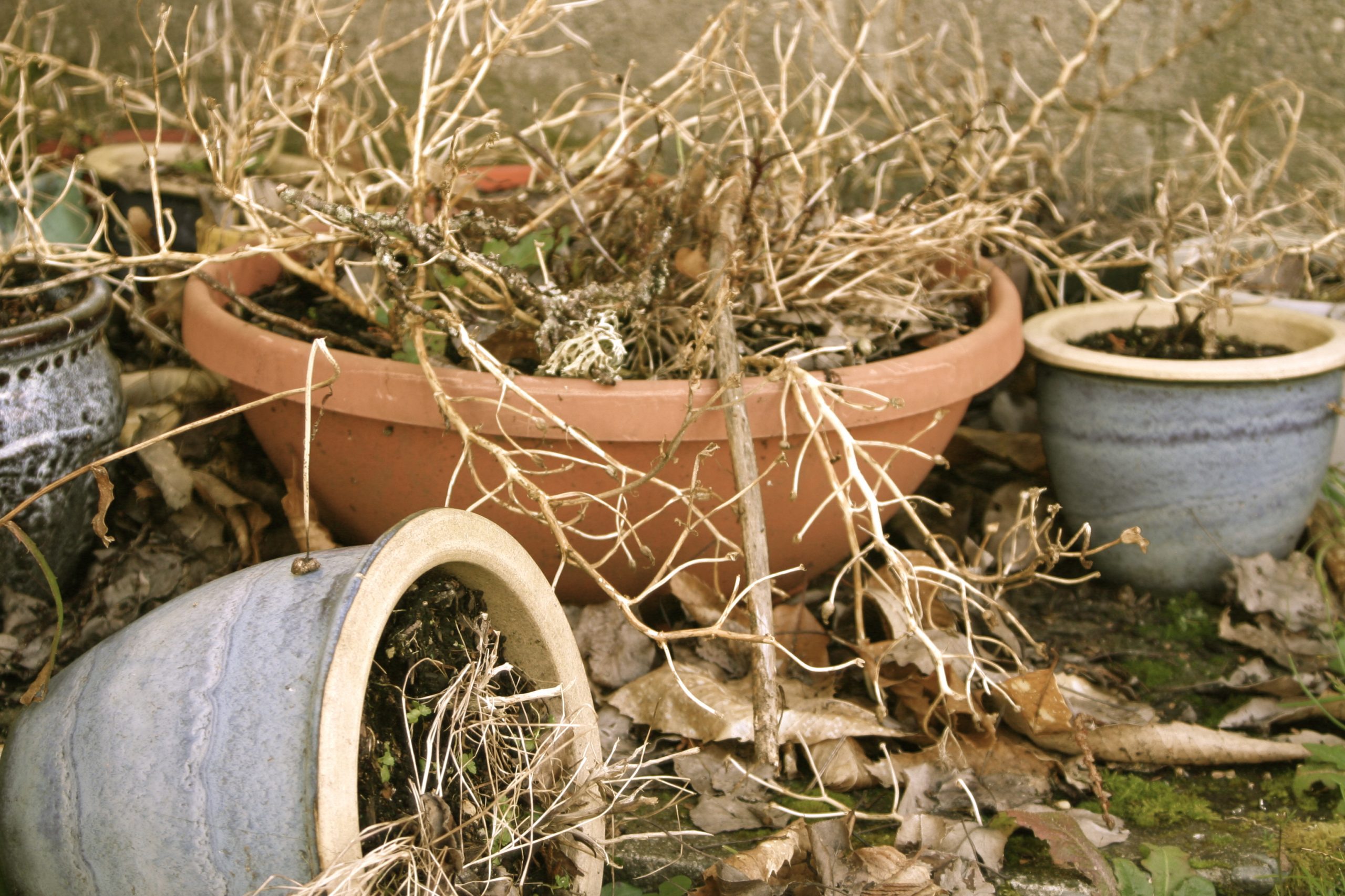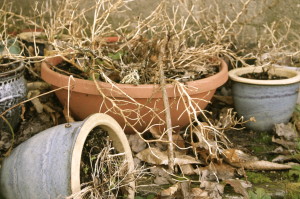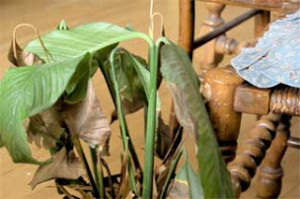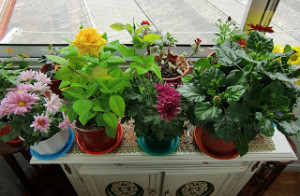
While the temperatures outside are currently sub-zero in Minneapolis and the weather is dark and gloomy, many gardeners turn their attention indoors. But growing plants inside presents a whole new set of challenges and many of us end up throwing out a soggy, stinking mess well before spring.
The first thing to consider is providing a healthy environment for your plants. Today we will go over a houseplant’s basic needs: light & temperature.
Light & Temperature:
If you bought a houseplant from the store you should take a look at the tag – most of them will have helpful care instructions on how much light your plant will need. Unless the tag says the plant needs only indirect light you will want to have your plants near a South or West-facing window with plenty of sun. A North-facing window will hardly have any direct light in the winter and will likely be fairly cold.
Which brings me to my next point: when placing plants in windows always keep temperature in mind. Most houseplants prefer warmer temperatures between 70-80F during the day and 60-70F at night. Many tropical plants will begin to show cold damage when temperatures fall below 50F. If you notice ice or frost forming on the inside of your window, any plants sitting right next to the glass are getting too cold. The easiest prevention is closing your blinds at night. This will put a barrier between your plants and the cold window. If blinds are not an option you can move the plants – a few feet away should be safe.
If you don’t have much natural light from your windows you may need to supplement with artificial light. There are a lot of special plant growth lights out there but they tend to be pretty pricey. Cool-white or warm-white fluorescent light bulbs can provide similar light to the special growth bulbs and are much less expensive. Don’t bother with incandescent bulbs – they put out the wrong light wavelengths, get too hot, and are not as energy efficient as fluorescent bulbs.
No matter what kind of bulb you use, the most important thing to know about artificial light is that the strength of the light dissipates rapidly. You need to have your plants as close to the bulbs as possible without burning them (see the ideal temperature ranges above) – try setting it up between 4-8 inches from the top of the plant and remember to move the light up as the plants grow.
It’s easiest to plug your lights up to a timer so you don’t need to remember to turn them on and off. A 3-prong 24-hour timer works great and can be purchased at most hardware stores. Most houseplants will do well with 12-14 hours of light.
If you have any questions about light and temperature please comment below!
Until next time, happy growing!
Annika is the horticulturalist at Peterson Lawn Services. Call (952) 252-3301 or send an e-mail to michelle@petersonlawn.com to schedule a free garden consultation today!



